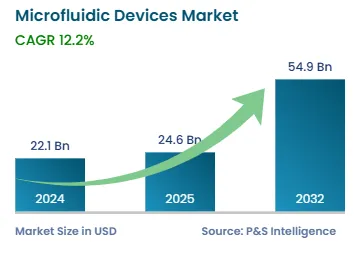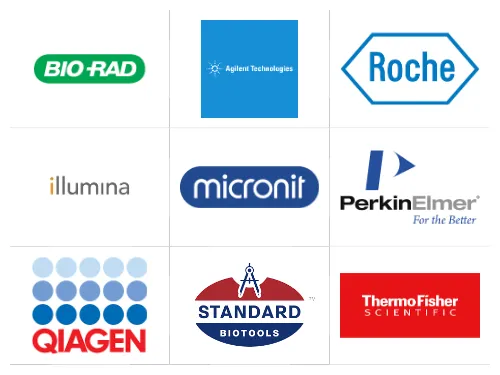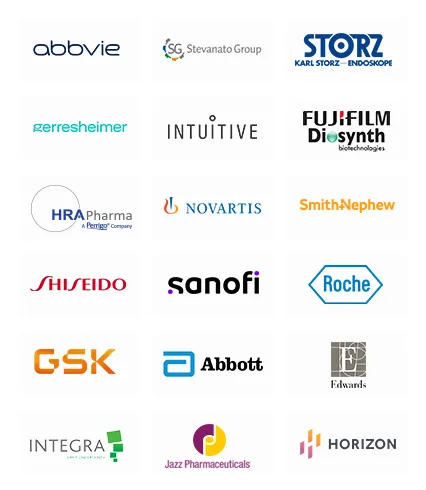Microfluidic Devices Market Future Projects
The microfluidic devices market size stands at USD 22.1 billion in 2024, and it is expected to grow at a CAGR of 12.2% during 2025–2032, to reach USD 54.9 billion by 2032.
Microfluidics is an evolving scientific field with a wide range of analytical applications and commercial prospects in the fields of protein crystallization, cell biology research, and medicine. Thus, this technology is an important tool to reduce side effects and improve the efficacy of treatments.
Moreover, the demand for micromachined biological instruments is expected to grow significantly over the coming years, boosted by the expansion of genomics and proteomics research, as well as the targeted integration of lab-on-a-chip tools into laboratory procedures.
With the recent developments in the biotechnology field, numerous applications of microfluidic technology have been identified, including next-generation sequencing, drug discovery, point-of-care diagnostics, cell analysis, and biomarker analysis. Companies are developing advanced instruments for various applications that have a higher speed and sensitivity, a smaller size, and a lower cost.
The high-throughput screening techniques allowed by in-vitro diagnostics (IVD) with low sample volumes and the advancement of sophisticated labs-on-a-chip are all driving industry expansion.
The market for microfluidic devices is expanding as a result of the technological developments in the associated products. Silicon, glass, polymer, and other materials are used to make microfluidic devices. It is now possible to fabricate silicon and glass materials for creating medical devices and equipment. In addition, the substantial research in the field of microfluidics has strengthened the attention on polymer-based devices as well.
Businesses have increasingly concentrated on investing in R&D with the increase in contagious diseases. By enhancing efficiency and accuracy, biotech firms and laboratories are putting more emphasis on the accuracy of their test findings, which has contributed to the industry's expansion.
The COVID-19 pandemic has had a favorable effect on the market of microfluidic devices as a whole. This is because rapid diagnostic tests, point-of-care assays, and intravenous diagnostic devices with microfluidic technology were in high demand for drug discovery and testing.



